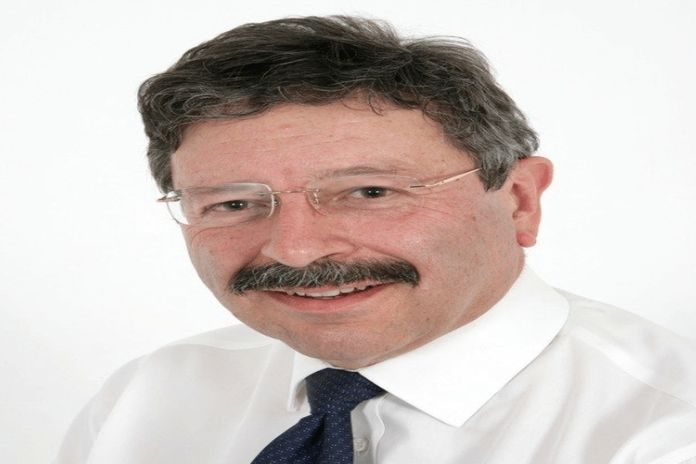By David Jessop
Despite the understandable desire by some in tourism to talk up a ‘return to normal’, it is hard to avoid the conclusion that the industry’s recovery from the pandemic will be slow and uncertain, largely because infection rates in the region’s principal overseas markets continue to rise.
This suggests that the timing of any return to pre-pandemic tourism buoyancy now depends on factors far beyond the region’s control and full recovery is unlikely to occur this or year or even in 2021.
Unfortunately, the spread of COVID-19 is evolving in the region and its key visitor source markets in different ways and over dissimilar time scales, implying that finding a viable basis for the full return of air and sea lift to the region will likely be complicated and slow until a vaccine is found. To make matters worse, economic uncertainty now faces many mid-market travellers in North America and Europe.
The hiatus in arrivals helps make the case that it is time for a long-overdue discussion about how tourism-related economy might be transformed, future-proofed, and the industry’s longer-term vitality be better harnessed to encourage broader economic growth.
Unlike most Caribbean industries, tourism has grown in a haphazard unintegrated manner, powering its way from the 1990s on to dominate much of the Caribbean economy. This happened as preferential arrangements for agriculture and commodities were attenuating, disposable income was growing rapidly in North America and Europe, and governments were happy to regard the industry as an alternative, seemingly limitless way to rapidly generate economic growth and revenues.
What the pandemic has proved is that the critical role the industry now plays requires greater strategic consideration so that the economic demand it creates encourages not only linkages with the wider economy but also catalyses development grows transferable skills and supports newer industries in ways that better balance the national economy.
While everything possible should be done by governments and the industry to facilitate tourism’s short term recovery, the industry’s economic dominance suggests that this should be coupled with a thoroughgoing long-term analysis that explores how the pandemic may structurally change travel and tourism, and how a more strategic approach might reposition the industry so that it facilitates domestic growth.
The pandemic offers a unique opportunity to assess how a region with billions of dollars invested in fixed hospitality infrastructure, in a region unlikely to ever go out of tourism, might establish linkages that go far beyond the obvious such as agriculture and fisheries, and for example, be incentivised to link with and stimulate the growth of new services-based industries.
A few days ago Barbados’ minister of tourism and international transport, Lisa Cummins, explained how the Barbados government is hoping to turn the present crisis into an opportunity and has developed plans that it hopes will make it the southern tourism hub of the Caribbean.
Speaking to the Barbados Hotel and Tourism Association (BHTA), she said that as a part of government’s tourism restructuring plans it was negotiating with the cruise lines to make the island the homeport for cruise traffic in the southern Caribbean. When the lines resume service, she said, this would see them developing itineraries that begin and end in Barbados.
She went on to link the initiative to help the island’s hotel sector by negotiating with the cruise lines integrated pre-and post-cruise stays which when finalised, would be incorporated into the new tourism products and marketing programmes government is developing.
Senator Cummins also explained that government intends positioning the island as the southern regional hub for air travel, and as its deepens and expand its industry relationships will have as a part of its negotiating objective the inclusion of pre- or post-stay stopovers on the island for travellers passing through Barbados to other destinations.
The minister also plans to develop hanger services for private planes; a new business strategy for Grantley Adams International Airport that would increase air traffic; placing emphasis on the resilient high-end luxury segment of the travel market; better forecasting of international air traffic and industry trends using big data available from regional and international sources; redesigning the private-public sector partnership approach to marketing; and developing the possibility of a PCR test before travellers board, based on a project developed by Heathrow airport.
In addition, the Barbados government has said that it will create a much stronger training component for those who work in the sector and will develop a comprehensive approach that involves new green investment plans intended to make tourism fully renewable and conservation-oriented.
Senator Cummins said that the overall objective will be to re-emerge from the COVID experience “with a tourism product that has been transformed, but also with a tourism worker that has been upskilled, retooled, retrained and repositioned, to be the frontline worker in a new tourism economy” to make Barbados “far more effective, efficient and competitive” than before.
By recognising the extraordinary range of onshore services and support which cruise ships require, by thinking long term (the island provided a safe haven for cruise ships and helped repatriate crew) by taking advantage of the island’s geographic location, by trying to find a practical way to lessen the enmity between the cruise lines and the hotels, and by supporting workers, it is attempting to deepen holistically its engagement with tourism’s future.
Put another way what Barbados and Jamaica before it has been doing is thinking laterally about how tourism can bring wider benefits that are transformative.
By illustrating the critical economic importance of tourism, the pandemic has validated the case for a better integrated, and more socially relevant industry. It is indicating that with thought and sensitive direction, tourism can come to be seen by all as a sustainable, beneficial, ecologically sound, socio-economic development tool.





